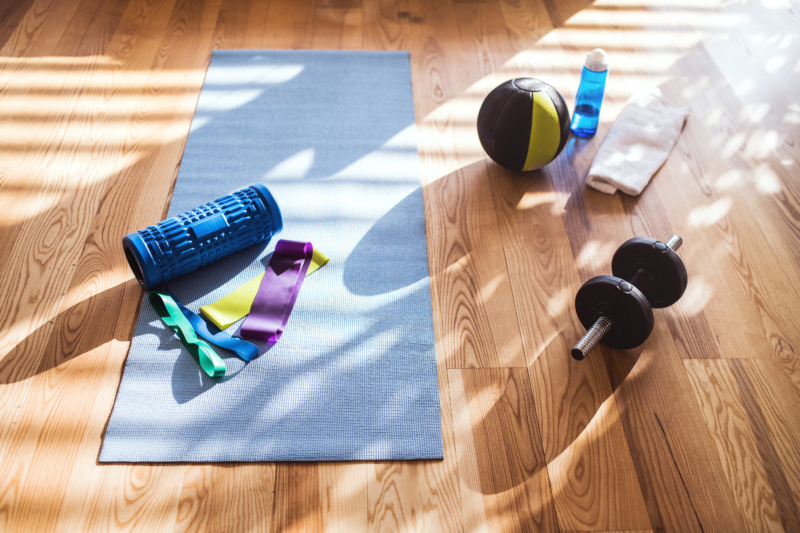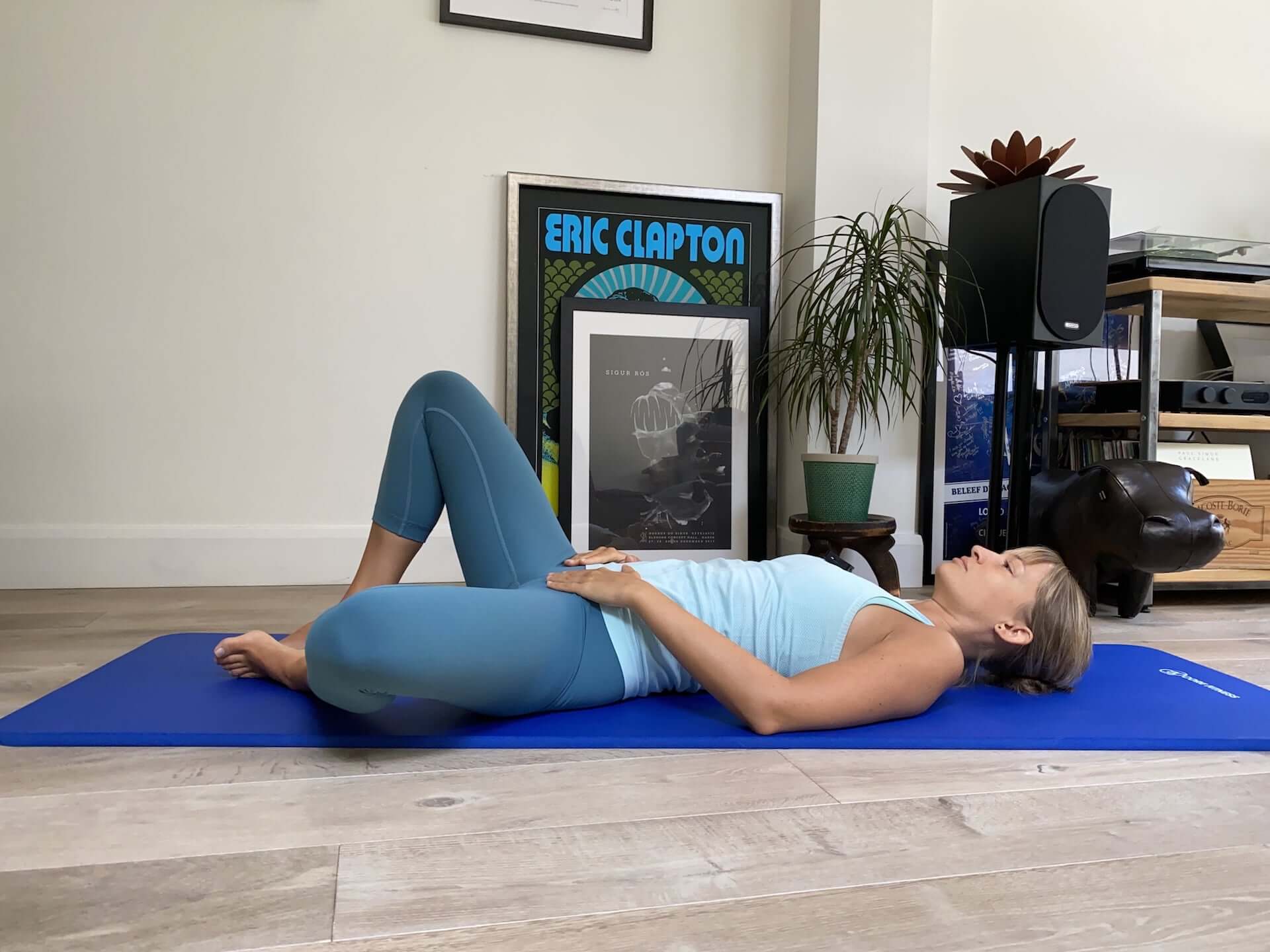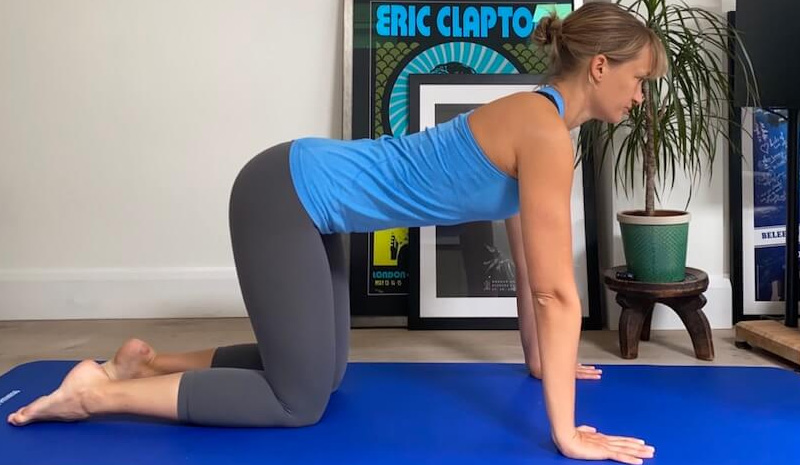Osteoarthritis is the most common form of arthritis in the UK and affects over 10 million people.
We see a lot of patients in the Pilates studio who suffer with symptoms from osteoarthritis.
This blog is about osteoarthritis and how Pilates can be beneficial.
What is osteoarthritis?
Osteoarthritis is a condition that causes the joints to become painful and stiff.
The severity and symptoms of arthritis can vary greatly from person to person and between different joints in one person. People will most often complain of pain and stiffness in the joints. This can include swelling and clicking or creaking. These symptoms can lead to reduced function and quality of life as you become less able to do the things you enjoy without pain.
Almost any joint in the body can be affected by osteoarthritis but most commonly it is the hips, knees and small joints of the hands.
Causes of osteoarthritis
Healthy joints will have a constant amount of damage and repair going on as we use them. This is normal and does not cause any symptoms.
In osteoarthritis the protective cartilage on the joint surfaces start to break down gradually which can cause pain and stiffness. Sometimes there are bony changes as well aggravating the area further.
The exact causes are not known but we do know that certain things can increase your risk;
- A family history of osteoarthritis
- An injury to a joint
- Joints already affected by gout or rheumatoid arthritis
- Being female
- Obesity
- Older age
Related reading: Pilates for older adults
How do I know if I have osteoarthritis?
Osteoarthritis can be diagnosed on an xray of the joint. This will be done in combination with an examination of your joints and the history of the symptoms you are presenting with. It is often diagnosed by your Gp or an orthopaedic surgeon.
Treatment for osteoarthritis
Exercise should be top of the list for prevention and treatment of osteoarthritis. Although we cannot prevent osteoarthritis, we can ensure that the joints and muscles surrounding them are in good condition to withstand the forces that we put through them on a daily basis.
For those with osteoarthritis we know that the x-ray findings do not always correlate to symptoms. This means that without having to have surgery or change the joint surfaces we can potentially change the symptoms you are feeling. Exercise can help to change those symptoms.
Strengthening the muscles around a joint can help to reduce the load going through the joint surface. For example, in the knee we can change the symptoms by strengthening the quadriceps, hamstrings and calf.
Often people can be fearful of exercise as they are concerned it may make the symptoms worse. This can cause a negative spiral as when you do less, the muscles get weaker and the joints get stiffer which can lead to more pain and more fear.
Exercise is safe and beneficial in osteoarthritis and should be encouraged for all at the appropriate level.
Advice and education are key. The more you understand about your condition and how your joints respond to activity and loading the more you can manage your symptoms. Sometimes this may involve activity modification but keeping active and exercising is vital, so we like to find a way for you to be able to do this and stay active.
Other treatment may include;
- Weight loss advice
- Supportive footwear
- Pain killers
- Injections
- Joint replacement surgery
Pilates for osteoarthritis
Pilates is a fantastic form of exercise for osteoarthritis as it is low impact, can be gentle and works on joint mobility as well as muscle strength. The other benefit of Pilates is that it does not focus on just one area of the body, we ensure that the whole body is working well and integrating effectively in your daily activities.
You will see changes in your posture, balance and whole body not just specific strengthening around the one joint that is giving you symptoms.
When you are seen one to one for clinical Pilates the programme can be made specific to you and your needs. Everyone with osteoarthritis is different and will have different goals. We will assess you as an individual and teach and advise you appropriately with the right progression at the right times.
All exercise programmes should be progressive as our body adapts to what we are doing we need to progress to avoid a plateau in movement or strength. Pilates can be modified to work from very low level to a very high level of strength to give a challenge for everyone. The Pilates equipment in our studios can be used to assist as well as resist movement so can help with this even more than mat Pilates alone.
Pilates exercises for osteoarthritis
1. 90 / 90
Everyone loves this exercise! If you go to a Pilates equipment studio you must ask them to do this next time you are there! We use the trap table, springs and straps to elevate and support your legs so that you can relax without the effects gravity.
It allows relaxation of the muscles around the pelvis, hips and knees and can give the feeling of space and offloading of the affected joints in osteoarthritis. This can allow people who may be in pain or have severe joint stiffness to find a way to get pain free movement and muscles activation.
2 Footwork
This is a favourite starting point for anyone in the Pilates studio. This is because it is a great way of looking at how we move in sit to stand or a squat, it is basically a lying down version!
We can change the resistance with the springs and the foot position to focus on different things.
This means we can reduce the load through the knees and hips so that we can effectively work the muscles without aggravating pain.
It lubricates the joints with its cyclical movement through hip, knee and ankle. With changing positions of the feet we can find the most optimal position for pain free movement to improve the range of the joints.
3. Terminal knee extension in standing
Although this is not specifically part of the Pilates repertoire it is a great exercise that we use in the studio. It encourages activation of the quadriceps to achieve full straightening of the knee in weight bearing. We need this to move normally in standing, walking and running. When these muscles are strong in this range it can reduce the symptoms at the knee joint.
4. Standing leg pump
This is a great weight bearing challenge using the Pilates chair. Being able to control your body weight and position well in standing is vital if you have osteoarthiritis to reduce the load on the joint surfaces and reduce the symptoms.
This is a great way to get the leg muscles working well in this position and strengthen the muscles around the hip and knee.
If you have osteoarthritis and would like to know more or book a session then please do get in touch, we are here to help!
Education is key:
These blogs are designed to give information to everyone, however, it is important to remember that everyone is different! If you have not seen one of our therapists and have any questions about injuries, what you have read or whether this may be useful to you, please just ask. We are more than happy to help anyone and point you in the right direction. Our biggest belief is that education is key. The more you understand about your injury, illness and movement, the more you are likely to improve.




